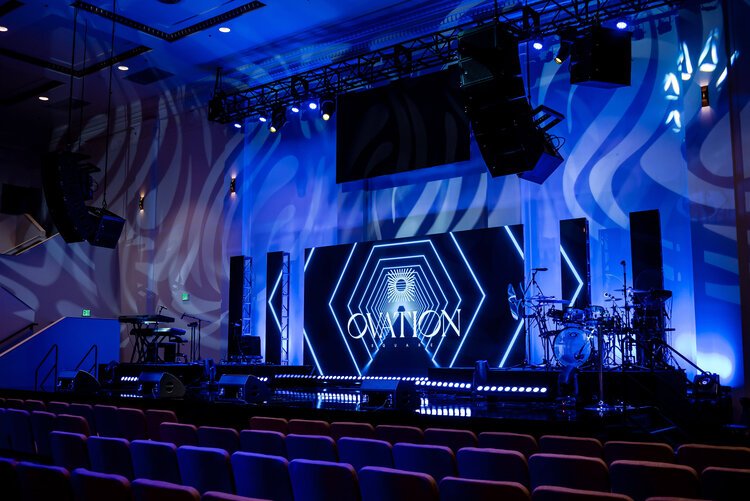Why Event Source Solutions Are Necessary for Seamless Event-Driven Styles
In the realm of contemporary software application development, event-driven styles are progressively common, yet their effectiveness depends upon the execution of robust event resource services. These options not only simplify the generation and administration of events but also enhance inter-component interaction by decoupling manufacturers from customers. This separation is important for maintaining system durability and versatility. As sectors change towards real-time data processing, comprehending the effects of occasion sourcing ends up being essential. What are the details benefits that arise when these options are integrated, and just how do they affect the future landscape of application growth?
Comprehending Event-Driven Architectures
Event-driven architectures (EDAs) stand for a standard change in developing software systems, where the circulation of info is identified by the incident of occasions. This building design advertises a decoupled technique, permitting different parts to connect asynchronously. In EDAs, occasions offer as the primary methods of communication, setting off processes or workflows in reaction to certain occurrences, such as user activities or system modifications.
The trick elements of an EDA consist of occasion producers, which produce occasions; event customers, which react to occasions; and event channels, which promote the transmission of occasions in between manufacturers and customers. This structure enhances system responsiveness and scalability, as components can individually process occasions without the requirement for synchronous communication.
Furthermore, EDAs enable real-time data handling, making them ideal for applications requiring prompt understandings-- such as fraud discovery in economic systems or keeping track of IoT gadgets. They also support a more dexterous development environment, enabling groups to repeat quickly and deploy new features with very little interruption to existing solutions.
The Role of Event Source Solutions
While various parts in an event-driven design rely upon reliable interaction, occasion resource services play an important role in producing and taking care of the circulation of events. These options work as the preliminary point of occasion development, recording adjustments in state or customer activities and converting them right into occasions that can be propagated with the system.

Furthermore, they promote the decoupling of producers and customers within a design, permitting systems to scale separately. This decoupling is important for enhancing system strength, as it lessens dependences that can or else lead to helpful hints bottlenecks or single points of failing.
Advantages of Real-Time Information Handling
Real-time information handling dramatically enhances the abilities of event-driven designs by enabling immediate insights and activities based on the most up to date details (your event source charlotte). This immediacy not only speeds up decision-making yet also enhances the significance and accuracy of those choices. Organizations can reply to events as they take place, lowering latency and improving operational dexterity
Among the primary advantages of real-time data processing is the capacity to record and examine data continually. This promotes positive measures instead than reactive feedbacks, enabling companies to anticipate fads and prospective concerns prior to they escalate. In industries such as financing or shopping, real-time analytics can determine fraudulent deals or customer habits adjustments, permitting quick interventions that alleviate danger and enhance consumer contentment.

Ultimately, the integration of real-time information handling right into event-driven designs empowers organizations to harness the complete possibility of their data, driving development and competitive advantage in an increasingly vibrant market.
Enhancing System Communication
Effective communication in between systems is vital for the success of any type of event-driven architecture. Occasion resource services promote this interaction by offering a robust structure for catching and transferring events in actual time. By standardizing how systems create and take in events, these solutions remove uncertainty and foster interoperability, enabling disparate systems to collaborate effortlessly.
Using occasion streams allows systems to react immediately to modifications, ensuring that all elements are aligned and educated. This responsiveness is important in environments where prompt information exchange directly influences decision-making and general system efficiency. Event source remedies provide systems for occasion filtering, improvement, web link and transmitting, enhancing the effectiveness of information circulation between systems.
Furthermore, by applying a publish-subscribe design, occasion resource solutions decouple system elements, permitting for greater versatility and scalability. This decoupling suggests that systems can evolve independently, making it much easier to incorporate new capabilities or change existing components without interrupting total communication.
Future Patterns in Occasion Sourcing


One more substantial pattern is the rise of cloud-native event sourcing options. These systems take advantage of the scalability and flexibility of cloud framework, allowing companies to efficiently take care of and keep substantial amounts of occasion information without the overhead of traditional systems. This change advertises higher accessibility and cooperation across teams.
In addition, the fostering of microservices design is affecting occasion sourcing techniques. As businesses progressively section their applications right into smaller sized, independent solutions, occasion sourcing provides a robust device to maintain data uniformity and integrity across these distributed systems.
Final Thought
To conclude, event source remedies serve as a critical foundation for smooth event-driven styles, enabling effective occasion generation and monitoring. By helping with asynchronous interaction in between parts, these solutions improve system durability and advertise the independent evolution of solutions. The advantages of real-time data processing and enhanced system communication highlight the relevance of adopting event sourcing approaches. As the demand for robust dispersed systems boosts, the importance of occasion resource remedies will certainly remain to grow, shaping the future of event-driven design.